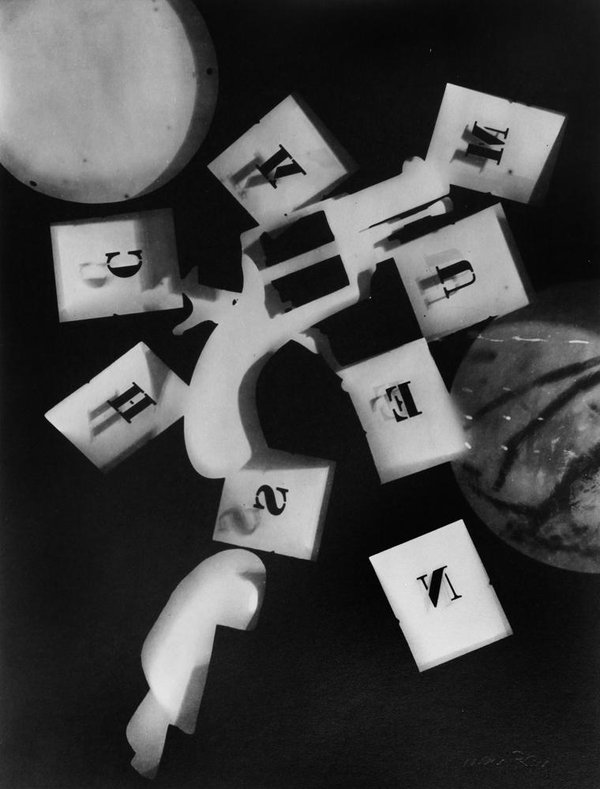Emojification of Culture
 |
| Untitled Rayograph by Man Ray, 1924 |
The interesting thing about an image-based culture is that it doesn't require articulation of any kind--or very little. This has evolved from Web 1.0 circa 2000 when people were more inclined to write more--not that there isn't writing now--but people were used to more excursive discussions over e-mail or bulletin boards or listservs. Images were simply more cumbersome then, as one would have to optimize them for the Web to the smallest possible file sizes to be sent over dial-up in data packets.
Now text itself is becoming more optimized for the web as a form of exformation.
The primary example of exformation that has been used as a quick definition is when Victor Hugo inquired with his publisher as to how Les Miserables was selling and used just a question mark "?" and the publisher replied "!". That was essentially emoji.
What is ironic now is that content is being serialized to be binge-consumed--something I have had reservations about. I always wonder why an idea has to be spun out to 8 hours when it could have been just 80 minutes. Man Ray talked about this in his essays in the late 1920s:
"For the type of film I am interested in, I can’t use more than twenty minutes showing time. Almost anything important can be told in that time. Why should sixty per cent of a film be taken up with people going in and out of doors or a couple of actors standing gabbing with each other?" (Man Ray, Writings On Art, p. 97)
Communication with images disabuses us from having to elaborate on anything because the presupposition is that everyone is busy getting on to the next bit of micro-stimulation, and the emoji is a manifestation of that. Over time, the web itself has discouraged users to engage with any long-form content and has had the same effect on communication: Silences or long periods between communications are fraught with invisible emoji.
Perhaps Man Ray had the right idea almost 100 years ago: Technology tends to want to give us more and more, then we scale back when we don't need as much. But if it becomes just "?" and "!" all the time then we need expansion and elaboration when necessary. Binging was the extreme solution to something we viewed capable of being infinite--an idea I like, but boredom becomes a factor because it starts to resemble the pace of real life and perhaps emojification is a form of film editing: cutting to form a narrative, but perhaps it cuts cut too much or too little.
The pace of a film that I like is like real life--to the point where there has to be more editing and cutting, but that is an art in itself. Perhaps communication should be like making films such that when it ends you take away some kind of narrative. But films can just be randomly generated, in which case the viewer makes the narrative from bits and fragments.


Comments